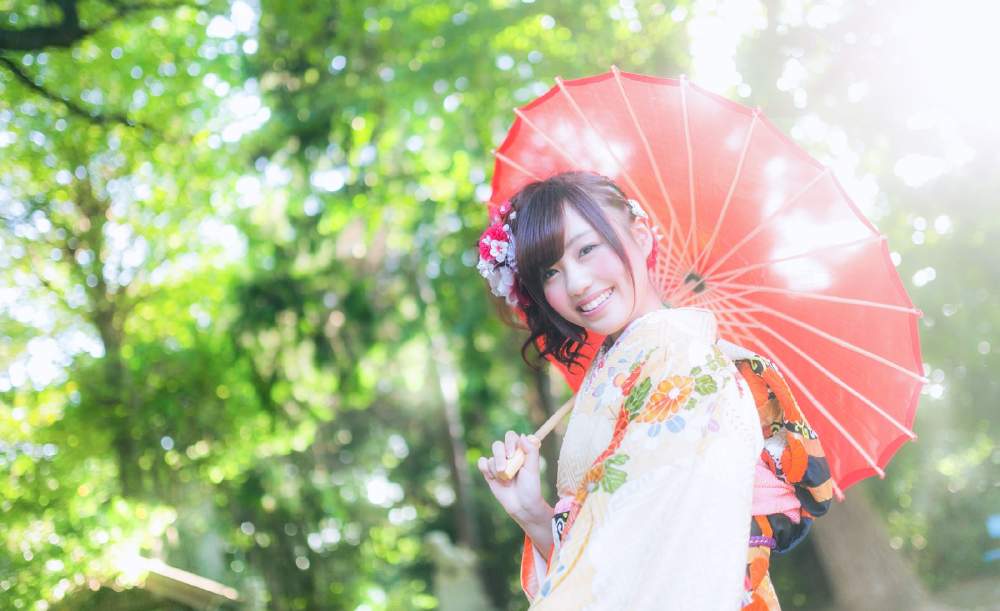Japanese culture is rich with poetic expressions that capture the beauty of nature, emotions, and wisdom. Among them, “Yojijukugo” (四字熟語)—four-character idiomatic phrases—hold a special place. These phrases combine the meanings of individual kanji to create profound and aesthetically meaningful expressions.
This collection of 25 beautiful four-character kanji phrases represents elegance, natural beauty, and refined emotions. Each phrase carries a unique cultural essence, deeply rooted in Japan’s artistic traditions. Whether you are interested in calligraphy, tattoos, language learning, or simply admiring the beauty of kanji, these idioms offer timeless inspiration.
Let’s explore these expressions of beauty in the Japanese language.
- 25 Beautiful Four-Character Kanji Expressions & Their Meanings
- 1. 花紅柳緑 (かこうりゅうりょく) – Ka Kou Ryū Ryoku
- 2. 花鳥風月 (かちょうふうげつ) – Ka Chō Fū Getsu
- 3. 迦陵頻伽 (かりょうびんが) – Ka Ryō Bin Ga
- 4. 鏡花水月 (きょうかすいげつ) – Kyō Ka Sui Getsu
- 5. 山紫水明 (さんしすいめい) – San Shi Sui Mei
- 6. 芝蘭玉樹 (しらんぎょくじゅ) – Shin Ran Gyoku Ju
- 7. 晴雲秋月 (せいうんしゅうげつ) – Sei Un Shū Getsu
- 8. 清風明月 (せいふうめいげつ) – Sei Fū Mei Getsu
- 9. 雪月風花 (せつげつふうか) – Setsu Getsu Fū Ka
- 10. 千紫万紅 (せんしばんこう) – Sen Shi Ban Kō
- 11. 百花繚乱 (ひゃっかりょうらん) – Hyakka Ryō Ran
- 12. 明鏡止水 (めいきょうしすい) – Mei Kyō Shi Sui
- 13. 落花流水 (らっかりゅうすい) – Rak Ka Ryū Sui
- 14. 暮色蒼然 (ぼしょくそうぜん) – Bo Shoku Sō Zen
- 15. 高山流水 (こうざんりゅうすい) – Kō Zan Ryū Sui
- 16. 脣星落落 (しんせいらくらく) – Shin Sei Raku Raku
- 17. 一片氷心 (いっぺんのひょうしん) – Ippen Hyō Shin
- 18. 桜梅桃李 (おうばいとうり) – Ō Bai Tō Ri
- 19. 雲外蒼天 (うんがいそうてん) – Un Gai Sō Ten
- 20. 花天月地 (かてんげっち) – Ka Ten Ge Cchi
- 21. 雪魄氷姿 (せっぱくひょうし) – Seppaku Hyō Shi
- 22. 羞花閉月 (しゅうかへいげつ) – Shū Ka Hei Getsu
- 23. 嵐影湖光 (らんえいここう) – Ran Ei Ko Kō
- 24. 柳緑花紅 (りゅうりょくかこう) – Ryū Ryoku Ka Kō
- 25. 柳暗花明 (りゅうあんかめい) – Ryū An Ka Mei
25 Beautiful Four-Character Kanji Expressions & Their Meanings
1. 花紅柳緑 (かこうりゅうりょく) – Ka Kou Ryū Ryoku
“The vivid beauty of spring” – Describes the lush greenery of willows and the brilliant red of blossoms, symbolizing natural beauty untouched by human interference.
2. 花鳥風月 (かちょうふうげつ) – Ka Chō Fū Getsu
“Flowers, birds, wind, and moon” – Represents the deep appreciation of nature’s beauty, often inspiring poetry and art.
3. 迦陵頻伽 (かりょうびんが) – Ka Ryō Bin Ga
“A heavenly bird’s song” – Refers to a mythical bird with a voice so beautiful that it enchants all who hear it.
4. 鏡花水月 (きょうかすいげつ) – Kyō Ka Sui Getsu
“Mirror flowers, water moon” – Symbolizes something beautiful yet intangible, like a dream or an illusion.
5. 山紫水明 (さんしすいめい) – San Shi Sui Mei
“Mountains bathed in purple, waters shining” – Describes a breathtaking natural landscape, often used in poetry.
6. 芝蘭玉樹 (しらんぎょくじゅ) – Shin Ran Gyoku Ju
“Orchids and jade trees” – A metaphor for exceptionally talented and beautiful people.
7. 晴雲秋月 (せいうんしゅうげつ) – Sei Un Shū Getsu
“Clear clouds and an autumn moon” – Represents a pure and peaceful state of mind, like the serene beauty of the sky.
8. 清風明月 (せいふうめいげつ) – Sei Fū Mei Getsu
“Refreshing breeze and bright moon” – A phrase symbolizing calmness and a clear mind.
9. 雪月風花 (せつげつふうか) – Setsu Getsu Fū Ka
“Snow, moon, wind, and flowers” – A celebration of seasonal beauty and poetic inspiration.
10. 千紫万紅 (せんしばんこう) – Sen Shi Ban Kō
“A thousand purples, ten thousand reds” – Depicts a landscape filled with colorful blossoms.
11. 百花繚乱 (ひゃっかりょうらん) – Hyakka Ryō Ran
“A profusion of blooming flowers” – Symbolizes a time when many great talents shine together.
12. 明鏡止水 (めいきょうしすい) – Mei Kyō Shi Sui
“A clear mirror and still water” – Represents a calm, undisturbed mind like a flawless mirror.
13. 落花流水 (らっかりゅうすい) – Rak Ka Ryū Sui
“Falling flowers, flowing water” – Symbolizes impermanence and the passage of time, often linked to romance and nostalgia.
14. 暮色蒼然 (ぼしょくそうぜん) – Bo Shoku Sō Zen
“Twilight turning blue” – Captures the soft and melancholic beauty of dusk.
15. 高山流水 (こうざんりゅうすい) – Kō Zan Ryū Sui
“High mountains and flowing water” – A metaphor for deep friendship or appreciation of exquisite music.
16. 脣星落落 (しんせいらくらく) – Shin Sei Raku Raku
“Fading stars at dawn” – A poetic phrase describing the loss of important things over time.
17. 一片氷心 (いっぺんのひょうしん) – Ippen Hyō Shin
“A heart as pure as ice” – Represents a mind that is crystal-clear and untainted.
18. 桜梅桃李 (おうばいとうり) – Ō Bai Tō Ri
“Cherry, plum, peach, and apricot” – Each flower blooms in its own time, symbolizing individuality and natural beauty.
19. 雲外蒼天 (うんがいそうてん) – Un Gai Sō Ten
“Beyond the clouds, a blue sky” – Encourages perseverance, as struggles will eventually lead to better days.
20. 花天月地 (かてんげっち) – Ka Ten Ge Cchi
“A world filled with flowers and moonlight” – Describes a breathtakingly beautiful night scene.
21. 雪魄氷姿 (せっぱくひょうし) – Seppaku Hyō Shi
“Snowy soul, icy figure” – A metaphor for grace and purity, often associated with plum blossoms in winter.
22. 羞花閉月 (しゅうかへいげつ) – Shū Ka Hei Getsu
“Flowers bow, the moon hides” – A poetic way to describe a woman so beautiful that nature itself is humbled.
23. 嵐影湖光 (らんえいここう) – Ran Ei Ko Kō
“Stormy mountain shadows, shimmering lake” – Captures the dynamic contrast of nature’s beauty.
24. 柳緑花紅 (りゅうりょくかこう) – Ryū Ryoku Ka Kō
“Willows green, flowers red” – Represents the natural beauty of the seasons.
25. 柳暗花明 (りゅうあんかめい) – Ryū An Ka Mei
“Dark willows, bright flowers” – A phrase symbolizing the emergence of hope and beauty after hardship.
These 25 beautiful four-character kanji expressions reflect Japan’s profound appreciation for nature, emotion, and harmony. Each phrase encapsulates elegance and poetic depth, making them perfect for use in art, tattoos, calligraphy, or personal inspiration.
Let these timeless expressions bring you closer to the grace and richness of the Japanese language. 🌸✨


Comments